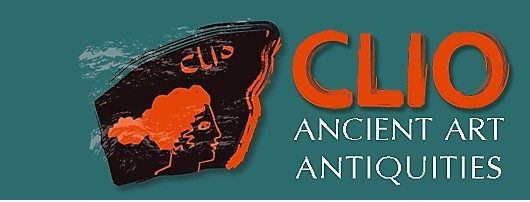The Museum of London offers, in my view, one of the most complete and satisfying museum experiences anywhere. Tracing the development of the greater London area from prehistory right through today, it offers not only extraordinary artifacts but art, interactive exhibits, dioramas, reconstructions and more to help the visitor understand London in any era. Indeed, I would recommend a visit to the Museum of London for any London visitor who wants to understand something of the development, character and geography of the City during their stay.
The Roman exhibits are remarkable, in that they make a very thorough attempt at reconstructing at least a glimpse of daily life in Roman London over its 300+ year history. This brief photo essay offers just a sample of exhibits I found to be of special interest during a 2012 visit.
 Inscribed tombstone of a 3rd Century AD Roman centurion, found during reconstruction of St Martin’s Church, Ludgate Hill, in 1669. His clothing and the staff in his hand offer clues to his rank. The inscription reads: “To the spirits of the departed and to Vivius Marcianus of the 2nd Legion Augusta, Januaria Martina, his most devoted wife, set up this memorial.”
Inscribed tombstone of a 3rd Century AD Roman centurion, found during reconstruction of St Martin’s Church, Ludgate Hill, in 1669. His clothing and the staff in his hand offer clues to his rank. The inscription reads: “To the spirits of the departed and to Vivius Marcianus of the 2nd Legion Augusta, Januaria Martina, his most devoted wife, set up this memorial.”
These 2 images are from a display of household wares in ceramic and glass, both Romano-British and imported from elsewhere in the Empire. In the lower image are several items, including ceramic oil lamps and parts of glass vessels, decorated with imagery related to gladiators and the arena.
Part of a reconstructed Roman glass maker’s workshop that was excavated in London. Large amounts of recycled glass were broken up for melting down into molten glass, from which new glass vessels and objects were made.
An example of the excellent educational exhibits in the Museum of London. This is an actual section of a Roman mosaic floor, mounted in a display where it can be touched by visitors.
Reconstruction of a finely appointed room in a Roman home in London, based on excavations. The mosaic floor is original.
A display or Roman jewelry, including brooches, rings and bracelets. Most are made of bronze and decorated in various techniques, including enameling, embossing, silvering, tinning or gilding.
The 5 denominations of Roman coinage during the 1st and 2nd Centuries AD
Roman gold coins of the 1st and 2nd Centuries AD, all found in London.
3rd Century AD Roman limestone relief of 4 mother goddesses, found reused as building material in London. These deities may represent a merging of native or local British goddesses with deities from the traditional Roman pantheon.
3rd Century AD limestone sculpture of a male figure and horse representing either Castor or Pollux (the Heavenly Twins), found near the Temple of Mithras in London.
Excavations in 1999 at Spitalfields, London uncovered a Roman cemetery, including this stone sarcophagus containing a decorated lead coffin dating to the 4th Century.
Inside the Spitalfields coffin was the skeleton of a young woman who died in her 20s. Tests revealed she may have come to England from southwestern Europe. Forensic studies resulted in this facial reconstruction.
Visit the Museum of London website at: http://www.museumoflondon.org.uk/london-wall/
Visit Clio Ancient Art to see our selection of Roman Antiquities: http://www.clioancientart.com/catalog/c15_p1.html













